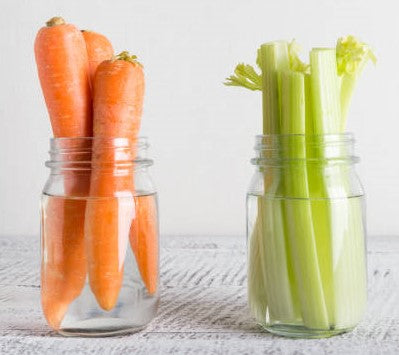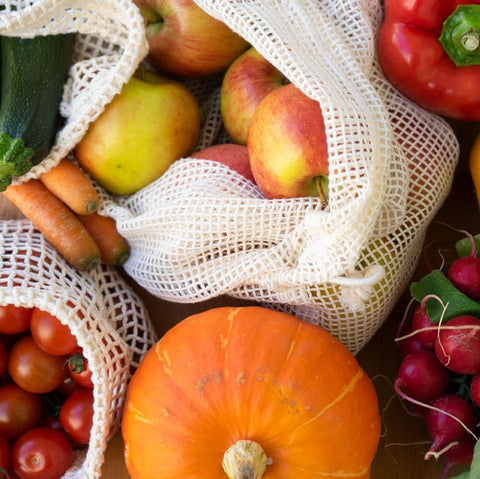1.3 billion tons of food is lost or wasted each year worldwide – that’s 1/3 of all food produced for human consumption!
Contrary to popular belief, food waste is not only, or even mainly, the fault of supermarkets, schools and hospitals. We as the common consumer are causing 54% of that food waste!
Food waste is not only a problem for us but also for the environment. It means wasted resources such as energy, land and water that go into producing the food. Also, food waste increases greenhouse-gas emissions as food waste in landfills can’t decompose properly. This results in the release of methane which is 20 times powerful than Co2 (which is released by composted organic materials).
-
Apps to prevent food waste – in Italy
Fortunately, there are some new apps being created in this period to help restaurants avoid throwing away extra food and there are some experimental shops selling food at steep discounts when it would otherwise be thrown away.
There are endless solutions online to help avoid waste. From the now famous Too Good to Go to Last Minute Sotto Casa, there are some wonderfully convenient apps to avoid wasting unsold food. They allow shops and restaurants to sell online excess food at low prices!
-
Shop smart
How many times do you run to the supermarket during the week without thoroughly checking what you already have in your refrigerator and cabinets first? I know, sometimes life can be so busy, it’s hard to plan! Just sit down to take five minutes to plan a few meals for the week (it can even be a rough plan) and make a list of what you need. You’ll not only save time not having to go to the market multiple times per week, you’ll also ensure you’re buying only the food you need - not more.
-
Get creative
Before saying, “I have nothing in the fridge” or “I feel like soup tonight,” try to get creative with the food in the house! I hate going grocery shopping and have learned to get really creative over the years. Having a few staple ingredients always on hand really helps. You’d be amazed at how many delicious meals you can make with a little effort!
If you’re lacking inspiration, check out Eco dal Frigo, a tool that allows you to create wonderful recipes using only ingredients available in your fridge.
-
Is it really too bad to eat?
I used to be that picky child who required a perfect apple with not even a spot on it. Things have changed! A dark spot on a tomato or bell pepper, a little bit of mold, are not going to kill you. Just cut off the piece, cook the food with high heat and you’ll be fine! And cheese? Did you know it’s actually by definition a form of mold? Just cut off the bad part and it’s good as new! Storing in bees wax wraps also helps reduce mold growth!
Lastly, never throw away your bread! There are incredible number of delicious recipes floating around the internet that will give your stale bread a new delicious life.
-
Eat it ALL!
Do you eat your carrot peels? And potato skins? Actually, you can eat peels from most fruits and vegetables! I have to confess, I was shocked when I discovered it’s practically an art in Italy to be able to peel your fruit with a fork an knife! I will never have this skill 😊
The important thing when you eat your peels, is just to clean them well. The best way to do this is with a natural fiber brush like this one. Scrub well to remove any dirt and cook as normal. Edible peels are rich in fiber, vitamins, minerals and antioxidants, making them one of the most nutritious parts of a plant. More vitamins and less compost, what’s not to like?
However, in cases where peels are not edible or if you just can’t bring yourself to eat them, save your vegetable peels to make broth!
-
Ask for a doggy bag!
Being American, I was VERY accustomed to taking a doggy bag of leftover food home every time I ate in a restaurant. I was pretty disappointed when being glared at and denied taking away my food upon moving to Italy. But things have changed in 12 years, and it’s becoming more and more acceptable to take away food. But to avoid a single use container, don’t forget to bring your own container or bees wax wraps to bring food home in! Note: There is good reason the doggy bag is so popular in the US – food portions are enormous vs. the much more normal food portions in Italy!
-
How to store fresh food to last longer
One of the best ways to make fresh food last longer is by making sure you’re storing it properly, giving you the best chance at avoiding food waste.
The single use plastic bags your fruits and vegetables come home from the supermarket in, are terrible for your food. They suffocate your food keeping in humidity which reduces the freshness of your produce.
Both organic cotton produce bags and bees wax wraps are wonderful for conserving food as long as possible. They are made from organic cotton which is important given they are used on your food!
Bees wax wraps are ideal for storing bread, wrapping cut open fruits and vegetables, covering bowl or dishes of food, wrapping salad and cheese.
Cotton net produce bags are great for storing any produce directly in your crisper drawer.

What are your favorite tips and tricks for avoiding food waste?



